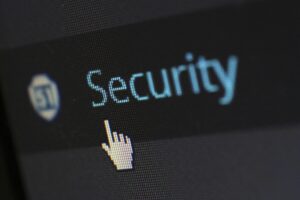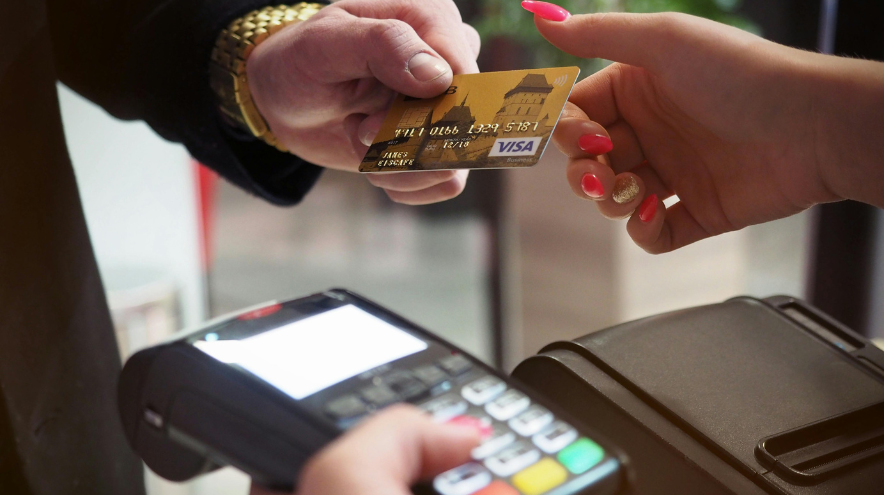10 Essential Tips for Cybersecurity

In an increasingly interconnected world, the importance of cybersecurity cannot be overstated. As technology continues to advance, so do the threats posed by cyber-attacks. To protect ourselves and our sensitive information, we must stay informed and take proactive measures to safeguard our digital assets.
With that in mind, we have compiled a list of 10 essential tips for cybersecurity to help individuals and organizations bolster their defenses against potential threats.
From strong password practices to staying vigilant against phishing scams, these tips are designed to provide practical guidance for enhancing your digital security posture. In this article, we will delve into each tip in detail, outlining the rationale behind it and providing actionable steps that you can implement immediately. By following these recommendations, you can better protect yourself and your data in an increasingly complex and interconnected digital landscape.
What is Cybersecurity?
In today’s digital age, cybersecurity has become a crucial aspect of our daily lives. It refers to the measures and practices taken to protect computers, servers, mobile devices, and the data they contain from unauthorized access, theft, damage, or disruption. Cybersecurity encompasses various techniques, tools, and strategies aimed at minimizing the risks associated with cyber threats.
Key Takeaways:
Cybersecurity is the practice of protecting computers, devices, and data from cyber threats.
It involves measures to minimize the risks of unauthorized access, theft, damage, or disruption.
Implementing cybersecurity practices is essential in safeguarding sensitive information.
Why is Cybersecurity Important?
The importance of cybersecurity cannot be overstated. With the increasing interconnectedness of devices and the constant exchange of data, the potential for cyber threats has grown exponentially. Cyberattacks can have severe consequences, including financial loss, data breaches, identity theft, and reputational damage.
By prioritizing cybersecurity, individuals and organizations can mitigate these risks and ensure the safety of their digital assets. Protecting personal information, financial details, and intellectual property is critical in preserving privacy and maintaining trust in the digital world.
Common Cybersecurity Threats
Before diving into the essential tips for cybersecurity, it’s important to understand the common threats that individuals and organizations face.
Some of the most prevalent cyber threats include:
Malware: Malicious software designed to harm or exploit computers, networks, and users.
Phishing: Deceptive emails, messages, or websites that aim to trick users into revealing sensitive information.
Ransomware: Malware that encrypts files and demands a ransom for their release.
Data breaches: Unauthorized access to sensitive data, often resulting in its exposure or theft.
Social engineering: Manipulating individuals to obtain confidential information or gain unauthorized access.
Being aware of these threats can help individuals better understand the importance of implementing cybersecurity measures.
Tip 1: Use Strong and Unique Passwords
One of the fundamental steps in securing your online presence is using strong and unique passwords for all your accounts. Weak passwords are easily guessed or cracked by hackers. Ensure that your passwords are at least 12 characters long and include a combination of uppercase and lowercase letters, numbers, and symbols. Additionally, using a different password for each account reduces the risk of a single data breach compromising multiple accounts. Consider using a password manager to generate and store complex passwords securely. This way, you won’t have to remember them all, ensuring a higher level of security.
Tip 2: Enable Two-Factor Authentication
Two-factor authentication (2FA) adds an extra layer of security to your accounts by requiring a second form of verification, such as a unique code sent to your mobile device, in addition to your password. This extra step provides an added level of protection, as even if your password is compromised, the hacker would still need physical access to your secondary device. Enabling 2FA whenever possible significantly reduces the risk of unauthorized access to your accounts and makes it much harder for cybercriminals to bypass your security measures.
Tip 3: Keep Your Devices and Software Up to Date
Keeping your devices and software up to date is crucial for maintaining a secure digital environment. Software updates often contain patches and fixes for known vulnerabilities. Cybercriminals are constantly finding new ways to exploit weaknesses, so regularly updating your operating system, applications, and antivirus software is essential. Set your devices to automatically install updates or regularly check for updates manually. Additionally, consider removing or disabling software or plugins that are no longer supported or frequently targeted by hackers.
Tip 4: Be Cautious of Phishing Emails and Websites
Phishing attacks are a common method used by cybercriminals to trick unsuspecting individuals into revealing sensitive information. They often masquerade as familiar entities, such as banks, social media platforms, or online retailers, with the aim of luring users into sharing their login credentials, personal details, or financial information. Be cautious of unexpected emails, especially those requesting urgent action or offering attractive deals. Avoid clicking on suspicious links or downloading attachments from unknown senders. Remember that legitimate organizations will never ask for sensitive information via email.
Tip 5: Use Antivirus and Anti-Malware Software
Installing reputable antivirus and anti-malware software is vital in protecting your devices from malicious software. These programs scan for and remove viruses, malware, and other potential threats. Keep the software updated to ensure you are protected against the latest threats. Consider using a comprehensive cybersecurity suite that provides real-time protection, firewall capabilities, and regular scans. Additionally, be cautious when downloading files or visiting websites from unknown or untrusted sources to minimize the risk of infection.
Tip 6: Secure Your Wi-Fi Network

Securing your Wi-Fi network is crucial for preventing unauthorized access to your internet connection and the sensitive information transmitted through it. Change the default router login credentials to strong and unique ones. Enable encryption such as WPA2 or WPA3, which encrypts the data sent between your devices and the router. Use a strong, unique Wi-Fi password that includes a combination of characters, numbers, and symbols. Regularly change the password and avoid using common and easily guessable passwords. Additionally, consider hiding your Wi-Fi network’s name (SSID) to add an extra layer of security.
Tip 7: Be Careful When Using Public Wi-Fi Networks
Public Wi-Fi networks are convenient but often insecure, making them potential hotspots for cybercriminal activity. Exercise caution when connecting to public Wi-Fi networks, especially those without a password requirement or those that use outdated security protocols. Avoid accessing sensitive information, making online transactions, or logging into accounts that contain personal or financial details when connected to public Wi-Fi. If necessary, consider using a virtual private network (VPN) to encrypt your internet traffic and secure your connection.
Tip 8: Backup Your Data Regularly
Regularly backing up your data ensures that even if you experience a cyberattack, accidental data loss, or hardware failure, you can restore your important files and information. Choose a reliable backup solution that suits your needs, such as cloud storage or external hard drives. Ideally, create multiple backups and store them in different locations to protect against physical damage or loss due to theft. Test the restoration process periodically to ensure your backups are functioning properly and that your data can be recovered.
Tip 9: Educate Yourself About Online Scams and Frauds
Education is a powerful tool in the fight against cyber threats. Stay informed about the latest online scams and fraud techniques. Regularly update your knowledge on emerging threats, phishing tactics, and social engineering techniques. Be skeptical of unsolicited emails, suspicious attachments, and unexpected requests for personal information. Verify the authenticity of communication before responding or taking any action. Educate yourself, your family, and your employees about cybersecurity best practices to create a more secure digital environment.
Tip 10: Regularly Monitor Your Financial Accounts
Regularly monitoring your financial accounts is an essential practice to detect any unauthorized activity promptly. Review your bank statements, credit card transactions, and other financial accounts regularly to identify any discrepancies or suspicious transactions. Set up account notifications or alerts to receive real-time updates on account activity. If you notice any unauthorized charges, report them immediately to your financial institution and take appropriate action to secure your accounts.
Conclusion
By following these 10 essential tips for cybersecurity, you can protect yourself and your sensitive information from cyber threats. Remember, staying vigilant and proactive is key in today’s digital world. Implement strong passwords, enable two-factor authentication, keep your devices updated, and educate yourself about online scams. By prioritizing cybersecurity, you can safeguard your digital presence and enjoy a safer and more secure online experience. Stay safe!
https://fiscalfitnessflow.com/index.php/2024/03/12/promoting-cyber-hygiene-best-practices-for-digital-wellness/
https://www.ftc.gov/
FAQs
Q: What are some cybersecurity tips to protect my data?
A: Some cybersecurity tips include encrypting your data, keeping your software up-to-date, avoiding public networks, disabling Bluetooth when not in use, and removing any adware from your devices.
Q: How can I ensure my cybersecurity practices are up-to-date?
A: To ensure your cybersecurity practices are up-to-date, regularly check for software updates, educate yourself on the latest security practices, and utilize cybersecurity resources available online.
Q: Why is it important to encrypt data?
A: Encrypting data is important because it scrambles the information in a way that can only be unscrambled by someone with the proper key, making it harder for hackers to gain access to sensitive information.
Q: What should I do in case of a data breach?
A: In case of a data breach, it’s important to act quickly by notifying the necessary parties, changing passwords, monitoring your accounts for any suspicious activity, and implementing additional security measures.
Q: How can I protect my business from cybersecurity threats?
A: You can protect your business from cybersecurity threats by implementing strong security measures, conducting regular cybersecurity audits, training employees on best practices, and utilizing cybersecurity resources specific to businesses.







